A Visit With Eli Leon And His Quilts ~ Part 2

Eli Leon collects more than just quilts. His living room is a delightful tableau of color and nostalgia. His living room is also the quilt viewing room. After bringing seven quilts --all he's ever made from-- from the basement, we hung them one-by-one along one end of the room from a row of heavy-duty clips using an antique step-ladder, then we sat back to enjoy the view.

This is Eli's his first quilt! As you can see he was greatly influenced by improvisational style of the African-American quilts he collects. Don't you love the glitter and the pop and the awesome modern color scheme?!
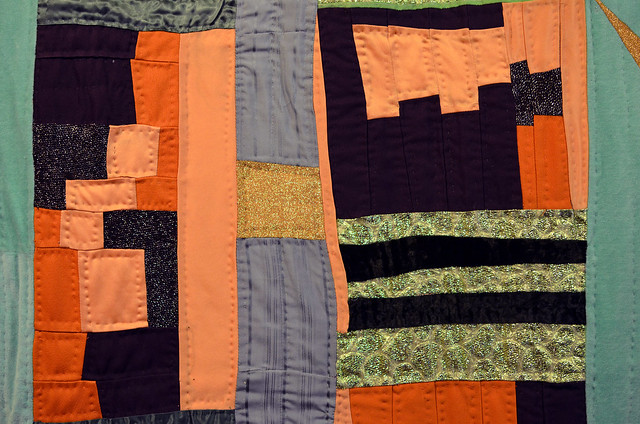

Eli made most of the quilts below during a one week period in 1989 while he was waiting to hear if he had received a Guggenheim Fellowship to continue the scholarship he started with the exhibition and catalog, Who'd a Thought It: Improvisation in African-American Quiltmaking. I've interspersed Eli's own quilts with excerpts from his catalogs about the improvisational process of the African-American quilt makers whose work he collected and exhibited.
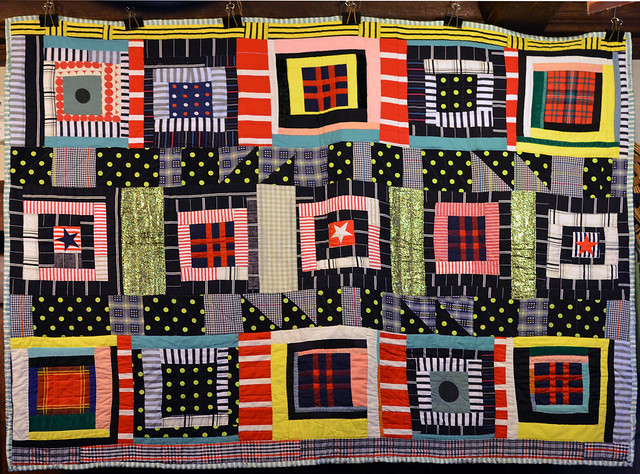
A classic quote from Eli's first catalog --on making mistakes:
"Mistakes" may be acceptable, or not seen as mistakes at all but welcomed as an integral component of craftsmanship. Wanda Jones says that when she was learning to quilt and would make a mistake, her mother would say, "It's nothin' about makin' it a little different. It's still the same pattern. You just added somethin' of your own to it." (Who'd a Thought It: Improvisation in African-American Quiltmaking)

On creating what I call the "rhythm of attention:"
West and Central African textile design often juxtaposes unlike motifs or interrupts orderly repetition by shifts in texture, direction, pattern or scale. Improvisational African-American quiltmakers make particular use of borders to effect such improvisational juxtapositions and interruptions. Willia Ette Graham, for example, added an odd border to a quilt in order to "make a little change." "I decided," she said, "as I had this left over from another quilt, I'd put them together to pick your eye back up again. If it's just one thing, your sight is just flat, but if you put somethin' in there to break that, well it's kinda like flashing a light in your face in the dark. And that's the way I go with most of my quilts, tryin' to match the pieces to where it don't just keep your sight beared down on one thing. You move on the see the next step. You searchin' for somethin' else to see." (Something Else to See: Improvisational Bordering Styles in African-American Quilts)
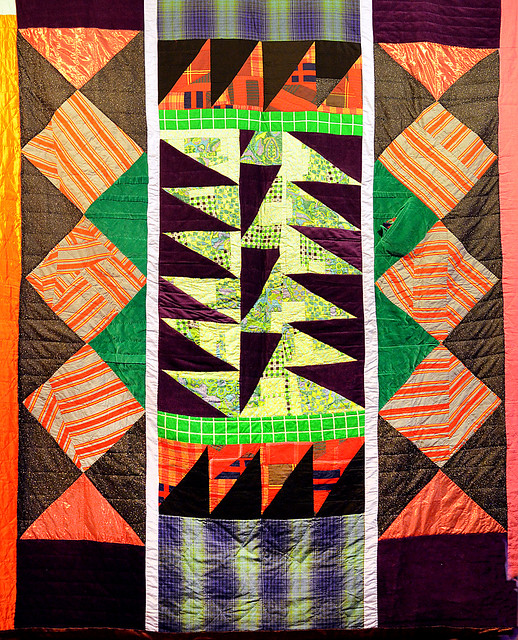
On making exceptions to the rules --something I try to teach in my Modern Block Improv workshops:
Practices such as measuring approximately, using scraps as found, incorporating accidents into the finished work and making frequent exceptions to whatever rules may have been established, are all aspects of a vision in which incidental contingencies, accepted as spontaneous offerings, are skillfully managed to contribute to the beauty and individuality of an artist's work. Accordingly, quiltmaker Laverne Brackens--an eloquent spokeswoman for improvisation--talks of "off-centering the centerpiece," displaying odd selvages, turning printed stripes in different directions, stripping lengthwise and widthwise in the same quilt, enlarging blocks that are too small for the current need with long strips of fabric, and working out the pattern as she goes along, all to effect a "different look," "change it up," or "give that quilt a offset look." (No Two Alike: African-American Improvisations on a Traditional Patchwork Pattern)

And possibly my favorite quote from one of Eli's catalogs --on being fearless with design:
Nor are these improvisation-minded quiltmakers unaware of the power of their heterodox, scrap-bag productions. "I'm going to be up to something real dangerous when I get through with this," Arbie Williams joked to me. This quilt done killed two people." (Let It Shine: improvisation in African-American Star Quilts)
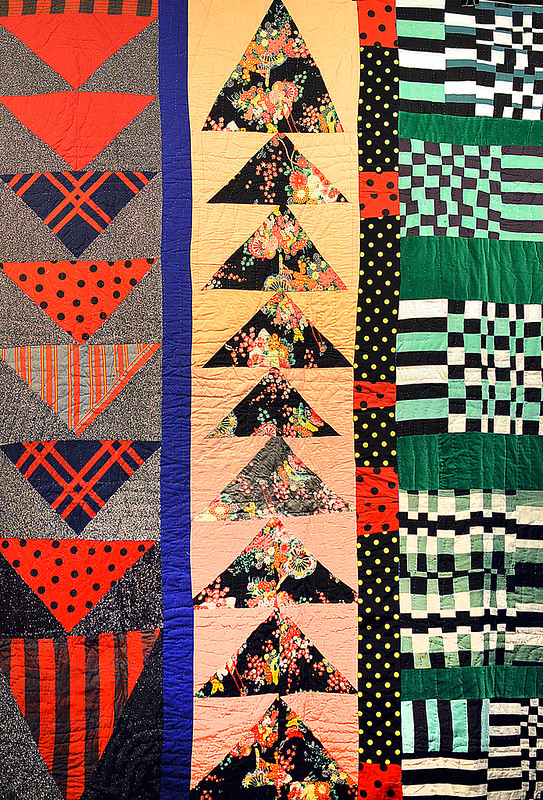
Eli gleaned the materials for the quilts above from flea markets and thrift stores, but the memorial quilt below was made from Eli's father's clothes two years after his death.
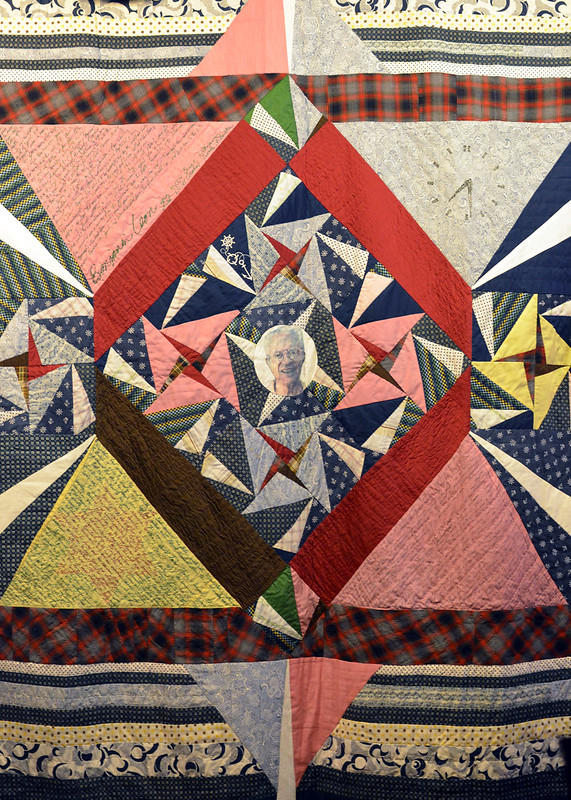
So sweet! I had a fantastic visit with Eli. He is such a unique person and a visionary curator and artist --completely devoted to the quilts he's loved and collected for almost a half-century and to the quilt makers who made them. His work has altered the path of my life and I'm sure of many others. Thanks Eli!
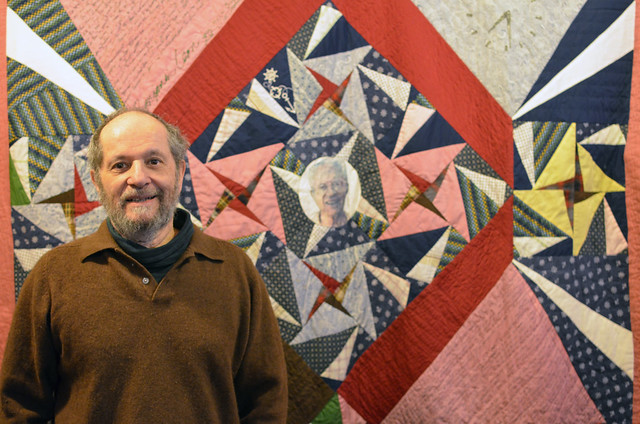
Oh in case you are wondering --he won that Guggenheim!
